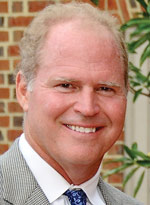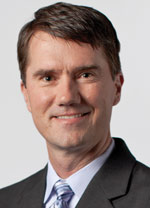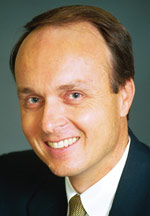In-Depth
Next-Gen Microsoft SIs on Profitability in a Changing IT World
In a wide-ranging panel discussion at the Microsoft Worldwide Partner Conference, four seasoned CEOs of award-winning regional systems integration companies discussed how they're moving on from the old forklift upgrade cycle to higher-value deals in strategy consulting, managed services and related areas.
- By Redmond Channel Partner magazine staff
- September 22, 2014
One of the most important and useful panel discussions of the Microsoft Worldwide Partner Conference (WPC) 2014 involved the chief executives of four regional systems integrators (SIs) who have been ahead of the curve in transforming their businesses beyond the forklift upgrade cycle that follows new Microsoft product releases.
Moderated by Revenue Rocket Consulting Group CEO and RCP columnist Mike Harvath, the panel consisted of four executives with dozens of years of experience among them and whose firms had together won enough Microsoft partner awards to fill several trophy cases:
- Mark Seeley, president and senior partner, Intellinet Corp., based in Atlanta, Ga.
- Charles Windsor, president and CEO, Oakwood Systems Group Inc., based in St. Louis, Mo.
- Ken Ryder, president, Systemgroup Consulting Inc., based in Mississauga, Ontario, Canada.
- Steve Roux, president and CEO, Innovative Computer Systems Inc. (ICS), based in Farmington, Ct.
On the agenda was a discussion of how their profitable regional SI companies, which range in revenues from $7 million to $18 million, are making the difficult shift from IT projects to strategic management consulting, managed services, cloud solutions, packaged solutions and other advisory services. Along the way, they've managed to increase revenues, stay profitable and increase their deal sizes.
"I know that all four of you guys have, over the last four or five years, fundamentally changed your business model," Harvath said as he encouraged each executive to describe his respective journey. "You've made significant investments in that model to be ready and prepared for some of the industry changes that are occurring around cloud, as well as to adapt to the changes that are occurring around customer environments."
Following are excerpts from the conversation and the audience Q&A on select topics. Some answers have been edited lightly for clarity.
Staying Profitable
On maintaining profitability amid the need for serious investments in technical and business skills.
Mark: When I took over, my founder and now partner said you have only one guideline. You can change the company completely, [but] always be profitable at any size because we had not been. So that emphasis on profitability, we changed a lot of avenues, our vision statement, our mission statement, but it was to say profitability is job one. A healthy company provides great security for our employees, provides a great sounding board for us to grow and mature. So we do profit sharing, we do everything like that. So it's making sure that it's a clear model that we control our own destiny, not Microsoft. We love 'em, we respect 'em, but a lot of where they're going is squeezing some of our old services. You've got to take leadership for where you are in your organization, make sure that you're driving clarity, and profitability will follow. Profitability's been great, but it probably started with us saying our own profitability is important to us. We're going to have our own strategy that integrates Microsoft, not follows Microsoft.
 "Focus...because IT is becoming so disintermediated by all these different channels and all these different providers trying to stake out their claim that the ability to fight across a number of those is, I think, fairly challenging for any company -- big or small."
"Focus...because IT is becoming so disintermediated by all these different channels and all these different providers trying to stake out their claim that the ability to fight across a number of those is, I think, fairly challenging for any company -- big or small."
Charles Windsor, President and CEO, Oakwood Systems Group Inc.
Charles: We haven't focused on profitability. I, specifically being the owner, have said I'm not interested in trying to make as much money as possible. We need to invest in this business as aggressively as we can, both geographically and diversity of service offerings, and profitability will come. You want to build a profitable business, and you've got to have a business model that works, but you've got to be prepared to invest in people, you've got to be prepared to invest in infrastructure or whatever the costs are, and they're primarily people-based. In the last four years, we've driven more around what are we doing, how we're growing and how we're building the business, than worrying about trying to drive some gross margin targets that ripple to the bottom line.
Ken: You have to manage your profitability to be sustainable, and if you're not sustainable it's not in anybody's interest at all. So I think your employees will understand that as part of your go-forward strategy. But for the development side of our organization, we face a constant pressure from offshore. How do you reconcile North American wages to offshore wages? How do you differentiate yourself? How do you establish a level of profitability that is based on what you have to pay -- $70,000 to $100,000 salaries. I would encourage any of you who are building organizations to make sure that you capture and are retaining your knowledge. Make sure you're leveraging your code libraries. All of that repeatability is built into your organization so that through efficiencies and productization of what you do, you're going to be able to offset some of that raw labor challenge coming from offshore. Managing your IP and trying to do as much reuse as possible is really going to enhance your bottom line.
Steve: Not deploying an Exchange Server every three years [was a profitability challenge]. And realizing through fixed bid proposals that we did $500 to $600 an hour and literally shutting that faucet off and going into a world where you spin people up into Office 365 and you don't realize that, we knew that was going to happen. I don't think we realized quite the total impact that it was going to have. But the good news is that we picked up that and more with our consulting services around the solutions that we were deploying. So it wasn't just migrating someone from Exchange 2007 to 2010 or 2013. It was, 'We're going to fundamentally change the productivity the end users experience.' So that was one of the things. Then, of course, the technology investment. Our investment in Lync 2010 [involved] sending technicians away on a 12-month period for over six, seven, eight weeks and not having them billable, plus paying for their education. [That] is a huge risk and a huge investment and one that has paid off tremendously.
What Fills the Server-Storage Hardware Margin Hole?
An SI from Indonesia reported struggling with the transformation from a project-based company to a cloud-based SI, especially because of the loss of margin related to sales of server hardware, storage hardware and software.
Ken: We made the conscious decision a while ago not to sell hardware or software. It's a different mindset, it's a different way of selling. Margins are lower. I'm not going to be spending a lot of my effort trying to chase single-digit hardware margins. And hardware is going away, it's going to the cloud. It's a whole sea change with Dell and IBM and everyone else. It's a world of change, so for us, I don't really care. It's the services revenue. Where the customer wants to put it in the cloud, on the site or hybrid, that's where the margin is.
 "It's making sure that it's a clear model; that we control our own destiny, not Microsoft. We love 'em, we respect 'em, but a lot of where they're going is squeezing some of our old services. We're going to have our own strategy that integrates Microsoft, not follows Microsoft."
"It's making sure that it's a clear model; that we control our own destiny, not Microsoft. We love 'em, we respect 'em, but a lot of where they're going is squeezing some of our old services. We're going to have our own strategy that integrates Microsoft, not follows Microsoft."
Mark Seeley, President and Senior Partner, Intellinet Corp.
Mark: Microsoft's POR concept of the Partner of Record and some of the funds give you a quick hit [and] the long tail for three years; that's the whole thing that we did to be able to say this is going to cannibalize our business. Our infrastructure practice went from about 20 people to four people over that time; then it's grown back up. Unfortunately, either you do it or somebody else in your region will do it. So to get that thought leadership at the IT level, know that you'll probably shrink but keep profit as key. Partner of Record is what we used to bridge the gap until we transformed. I wouldn't focus on revenue. I'd focus on profit. Top line is interesting, but three points plus your cost of sales plus your storage whatever, only where you can do profit. Get lean to where you can absorb the hit that will be coming and then try to resonate with some of the volume, or again, like we did, focus on things that were maybe outside of that normal SI avenue that maybe you could do on a recurring basis where appropriate.
Charles: Partner with somebody who's really decided to be in the hardware reselling business or the software reselling business as a way of a give-get. We're a services company, that's our commitment. We're going to allow you to benefit from some of these deals that we're coming across where you may be able to get some upside is kind of the way that we've always approached it. It's back to focus. You've heard that probably in almost every one of these sessions. Pick your poison, where do you want to focus. And then invest whatever resources you can in that because IT is becoming so disintermediated by all these different channels and all these different providers trying to stake out their claim that the ability to fight across a number of those is fairly challenging for any company -- big or small.
Changing Employee Skills
An audience member asked, "How did your teams actually change in terms of skill set, functions? What was the picture before and what is the picture now?"
Charles: In terms of our people skills, yes, they needed to change. They were more product implementers. And now we've been forcing them through a process, and they've been embracing it to get familiar on things like Azure, get familiar on things like Office 365, be more cognizant of the business conversation around what are the real business drivers. We've been really encouraging them to become true consultants.
Mark: I think the mindset toward our internal profit-sharing plan has given them a sense for how we make money by delighting customers and providing solutions. That empathy of moving people from technologists to consultants and, for us, even solution innovators.
 "We made the conscious decision a while ago not to sell hardware or software. It's a different mindset, it's a different way of selling."
"We made the conscious decision a while ago not to sell hardware or software. It's a different mindset, it's a different way of selling."
Ken Ryder, President, Systemgroup Consulting Inc.
Ken: One of the things that we did was bring in an independent personal consultant, and he developed some course materials around helping our people ask better questions, be more consultative. Some of our managers [got materials on] some of the basic management skills. Some of our technical people were starting to get exposed to presales opportunities where they were asked to whiteboard in front of a client. We introduced them to presentation skills and videotaped them, showed them how they performed and did some coaching in that area. Those other things, things that aren't technical skills but more interpersonal skills are things that are vitally important to elevate your touch points within your client.
Steve: I love the way our teams, we always had these battles internally. We do bowling tournaments and things like that between our infrastructure team and our software app dev team. What we've seen is that these teams are now extremely tightly integrated in the way we deliver our solutions to our teams out to our customers and that is really helping with the personal growth and the transformation is really coming from that.
Mark: Don't feel that you need to hire the next hire full time. When we started management consulting it was with a contractor ex-CIO that we knew could do it four hours a week, 10 hours a week. Then it became multiple clients, then it became multiple people. So dip in, make the investments on sales and marketing and then leverage the model as appropriate.
Internal Sales Conflicts
Another question from the audience involved internal sales conflicts. "Having a business line to manage the cloud business or the managed services, it's sort of creating a new competition within the same organization, which is we'll have fights within the organization because the normal business as usual would fight against those people, so there won't be support."
Charles: Yes, we struggled with that. We're wrestling with the handoffs, really, of these big projects to get them to the cloud or get them to do something that we then turn into a managed service offering, and where that handoff is certainly a dotted line and a blurred line at some point. I think the more you can define what it is you're doing from a managed service standpoint, and clearly define when the project is over or when you're in the middle of that implementation and you hand it off, that's going to be important to success. But that's been one of our challenges.
Audience follow-up: "And what about the salesforce in between those two camps?"
Charles: I think that the one company mentality is, we're all a family here. You don't have some P&L that you're doing things that are suboptimizing that customer experience. One company, one customer. No negotiation around, sorry, that's my P&L. We're one company. We're a team.
Friendly Client
On the importance of identifying a "friendly client" who can serve as an ally in the transformation process.
Ken: We were constantly looking for ways to expand our ability to serve a client and be relevant in the marketplace we were trying to serve. And, we decided to look at managed services as a stand-alone offering and, coincidentally, it was around 2008-2009 and the recession time frame when we went into one of our key clients. I spoke to their VP of IT, and he said, 'I have a problem. I've got all of these apps that I'm supposed to keep the lights on for, my staff doesn't want to manage them because they're old technology and it's not enhancing their resume, and I can't get any new headcount approvals. What can you do for me?' And I said, 'Well, coincidentally, we were just thinking about getting into this business.' And from there we had a friendly client, a small opportunity we could start building on, and that created the impetus and the inception of our managed services organization.
Mark: I wouldn't underestimate the idea of a friendly client can get you into all these new avenues. That's how we got into our 11 different offerings was one at a time with clients before we even changed our Web site or our collaterals, we did them one at a time in avenues where we could gain success. And then when we launched, because there was a distinction between where we had been, it was key that we had artifacts and customer references.
 "You take a great customer of yours and you just keep going deeper and deeper and deeper into understanding their organization, understanding what they need to be able to succeed, and that's where managed services really starts to make sense."
"You take a great customer of yours and you just keep going deeper and deeper and deeper into understanding their organization, understanding what they need to be able to succeed, and that's where managed services really starts to make sense."
Steve Roux, President and CEO, Innovative Computer Systems Inc.
Steve: I think the thing that has really just made the biggest difference for us, is you take a great customer of yours and you just keep going deeper and deeper and deeper into understanding their organization, understanding what they need to be able to succeed, and that's where managed services really starts to make sense. We like to call it you're co-sourcing or you're co-operating with key teams in these organizations. You're an extension of their team, and you can really operate that way.
Top Advice
Harvath asked each panelist to provide a top piece of advice for the audience "as they move to transform their business into more of a business transformation business."
Mark: My big thing is really don't be afraid to lead. Somebody's got to make the key decisions. You may be wrong, but lead with decisiveness, clarity and passion.
Charles: Try to productize what you do as much as possible. That way you can complement the more customer-driven kind of engagements, where you have to spend a lot of time up front scoping and defining what that is, with these more productized offerings [and it's] going to allow you to find the nice mix. You should especially do so, I think, around the subscription-based offerings that Microsoft is talking about, [like] Office 365.
Ken: Engage your people and enable your people. It is all about people. We do not have, per se, a product. It's the intelligence between the brain and the fingers that creates solutions for our clients. We call our developers consultants and we ask them to think that way when we take them through an interview process. We always ask them, 'How do you feel about learning?' Because we have to have that investment in their personal growth and allow them -- give them the vision, give them the skills, give them the tools and enable them to go forward and you will create a flywheel of continuous success.
Steve: Be willing to fail. Admit it when you are making one of those course corrections. I went a little early into the cloud, brought our team a little bit early in the cloud. The technology wasn't quite mature enough yet. And we all sat down and talked about it, what that meant. I wasn't afraid to say I might have made a mistake on that one and that I would certainly be making more mistakes, but that we'd be open and honest in talking about that together.